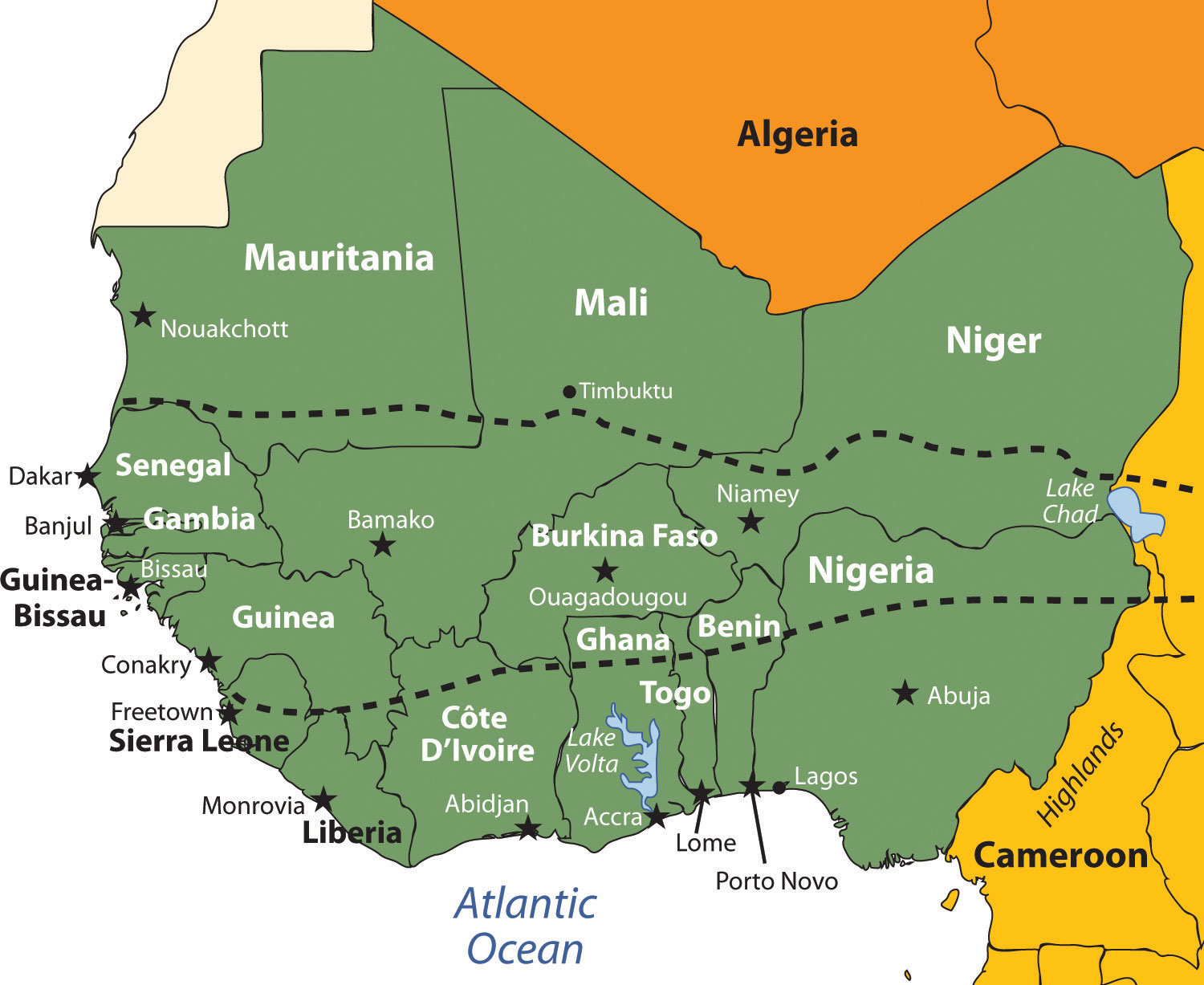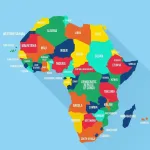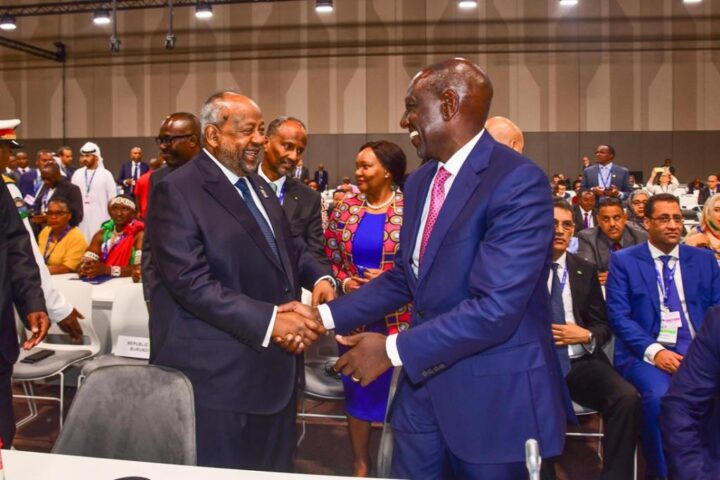Since the wave of independence that swept through Africa in the 1960s to the 1980s, there have been continual calls for better strategy for food production and distribution. So far, the calls have gone largely unheeded, though not without patches of efforts by successive African governments based on foreign partnerships and aids.
The food supply chain in Africa has been strained for years, witnessing problems from every quarter. Many Africans have been used to problems of access to food at affordable prices. This reality has been exacerbated by the COVID-19 pandemic, which aggravated decades-old problems of pests, climate change, armed conflicts and droughts betting the food sector.
The COVID-19 pandemic has, as of late, refreshed the call for strategy on innovation, investment, production and protection of the food supply chain in Africa. For a continent with a limitless expanse of arable wetlands, it is bad to note that over 80% of foods come from patchy rain-fed agriculture from peasants who face growing assault from food thieves and herders.
Join our WhatsApp ChannelPoor access to food markets across the continent, low yield, dependence on seasonal rains, low access to seedlings and fertilizers, and a crass failure of governance have also been blamed for food shortages in Africa.
As of 2020, more than 600 million people in Africa faced food insecurity, with half this number being in severe need of food. Africa’s annual birth rate of 2.6% has further strained the chain, and must be factored into future food plans.
East Africa is a textbook case of the food crisis. In countries like Ethiopia, Somalia, South Sudan, Kenya, and more nearly 30 million face the prospect of extreme hunger.
At least 27 million are at the risk of severe hunger in West Africa, with nearly half of those in Nigeria, the continent’s biggest economy. Conflict, insurgency, farmer-herder clashes and political instability have added undue pressure to a strained food chain in Nigeria, Burkina Faso, Chad, Mali and Guinea. The internally displaced people in these regions have surpassed five million, and they go to bed every day hungry.
In Ghana, 1.2 million, about 5% of the population are food insecure, according to the Ghanaian Ministry of Food and Agriculture. An additional two million were plunged into food insecurity by Covid-19.
We at the Prime Business Africa call for expedited action to develop a sustainable food strategy for Africa in a post-COVID era and realigning world order. The food strategy must therefore take into account rising foreign interests and international relations in Africa’s food chain.
The war between Russia and Ukraine has affected supply chains around the world, but with severer impacts on Africa. We also call attention to the fact that any future interest in food programme is certainly going to dwell on efforts to innovate in the food sector, and reset the food pendulum which is heavily tilted towards net food importation, with food bills reaching US $50 billion as of 2019. The interest of foreign countries must not be allowed to further worsen Africa’s ability to pay for food imports as a result of trade imbalance and deficits.
China, for instance, is one of the rising commercial hubs of the world, and a major economic interest in Africa, reaching a trade volume of $254 billion with Africa as of 2021, a 34% increase from 2020. The country has positioned well for new investment opportunities in Africa.
We caution that cooperation with foreign countries should be based on private investments, global financing and competition devoid of aid and donor agencies. Globalization and global finance system are offering opportunities for more sources of global investments and competition, and it should be an opportunity for negotiation, not domination.
For instance, the liberalization of institutions negotiated by global finance powerhouses opened up international business opportunities and investments since the 1990s. But it has also suffocated local business, and this is an area where the negotiation must occur.
Suffocation of local business has a chain effect on low commodity prices, debt crisis and low purchasing power of technology and expertise. Improved seedlings, fertilizers, as well as cross continental infrastructure are needed to boost Africa’s capacity in food production, supply and marketing within and across the continent. The supply and marketing chain must integrate increasingly into the online marketing stricture for requesting and transporting produce.
China has made waves in modern agriculture, including vast knowledge, experience and technologies in tropical crops found in much of sub-Saharan Africa. Current experience shows that areas of collaborative investments with China include crops like cotton and tobacco as well as in agricultural value chains such as processing, machinery, and input supply.
Research indicates that the Chinese offer of expertise and technology is more appropriate, with market standards less restrictive than investments from the West. Researchers have also argued that external help is sorely needed in these areas (expertise and technology) particularly and in agriculture generally as they have been largely ignored by western donors and investors for decades.
This is despite the well-proven commercial appeals and need for an agricultural export market to be developed by European investors in Africa. There have however been arguments about investment deterrents to western investors such as lack of infrastructure, distance to markets, tenure insecurity, among others. For now, these are areas of attention for long-term food strategy in Africa.
The route to food safety will never be easy, but a sustained effort to monitor and manage programmes must be put in place. The Nigerian government recently made news when it displayed rice pyramids in Abuja. New fertilizer plants have also been recently commissioned.
Critiques say that the effects of these have yet to be felt in the food market, but applause for government were still high-pitched in many quarters. The recent report by the Northern Ghana Activity that a 2017 food programme (Plant for Food and Jobs) had run into hitches of late distribution of seeds and fertilizers should be grounds for improvement, not abandonment of the programme.
We laud the Ministry of Food and Agriculture of Ghana in its efforts to subsidize seeds, fertilizers in providing agricultural extension services, and in facilitating access to 520 multipurpose tractors. The research support provided by the United States Agency for International Aid is also laudable, which should be backed by tangible effort to publicize the efforts of government and to forestall reported political interference.
Experts have proposed the provision of national and transnational road and rail networks to connect commercial hubs for smooth movement of food and agricultural materials. With over 60% of roads and rail networks in unusable conditions in many countries, it means that as much as 35% of food waste en route to markets.
Security, climatic problems (rain, mudslides) and trans-border checks are issues to be worked out as part of trans-border agreements to build transport systems. Public-Private Partnerships are veritable options that can be copied from some nations like Ireland, where they have worked. The 2017 cooperation between the UN’s Food Agricultural Organization, Ireland and African Union’s Commission must be strengthened as Ireland provides strong technical support.
With more than 70% of Africa’s largely youth labour force in the informal sector, the problems of electricity, machinery and storage systems are necessities that now seem out of reach and rather intractable. These are areas that large distribution networks and the banks can help by providing funds.
Unfortunately, such networks are in severe shortfall in Africa, and this is also having a different problematic effect. That is, distribution of existing agricultural produce goes straight to millions of small and medium scale businesses dotting the landscape which lack the means for economies of scale in bulk purchases of produce. This has made it easier for large distributors of imported products to have decisive economic advantage over local producers.
Also important is that future plans must be made to deal with the bottlenecks created by restrictions that affected food movement during the lockdown, plunging over 100 million African children into malnutrition and near starvation.
The Feed Africa Response to COVID-19 (FAREC) initiated by the African Development Bank can now be widened into a more long-term strategic response to food insecurity in Africa. The lessons that triggered the response were dire and still worthy of serious considerations.
We suggest that the investments through FAREC to governments, farmers and the private sector can now also go to agricultural research institutions and scholarship programmes for research and ‘practical’ farming.
Ghana’s ministry of Food and Agriculture has already started a post-COVID food programme composed of strengthening the food chain in the short term, and providing farm inputs and financing to food and livestock producers and processors in the long term.
The threat of a food crisis is real, and Africa can arrest it before it becomes even direr.















![Gender Activism An Economic Necessity In Africa [PBA Editorial]](https://www.primebusiness.africa/wp-content/uploads/2023/11/vaw-720x480.png)

Follow Us